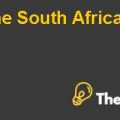US craft beer market Case Solution
How do you characterize Magee’s competitive strategy for the Lagunitas brand? What tool will you use?
The tool for accessing Magee’s competitive strategy would be Porter’s Generic Competitive Strategies Model(Porter, 2008)based on the degree of competitive advantage and competitive scope of the seller or company under question. Since Magee has been focusing on a strategy based on wholesale and on cutting costs it is clear that he wants to have a low cost business. However, he still believes that he has good customers coming in and there is high demand for his private label so instead of lowering the quality of his unfiltered draught beer, he has focused on increasing capacity and improving on customer services.
Initially Magee’s strategy could not entirely be called one of cost-leadership which has a broad target and low cost since he was not able to meet the demand or experience economies of scale. In addition to this, his strategy had a narrow focus since he was targeting a smaller group of customer rather than producing a volume to meet a high demand. This indicates that Magee’s had a narrow competitive scope in the beer industry but still wanted to keep the costs low. He was trying to gain a competitive advantage through lower costs but was focusing on a small segment of the industry by selling as a restaurant-brewery. According to Michael Porter’s Generic strategies, this type of strategy is called a ‘Cost Focus’ strategy. Porter’s Generic strategy model can be seen in appendix 2 with Magee’s position highlighted for greater clarity.
However, the initial focus had been of wholesale and so with the passage of the passage of time, growth was achieved and the strategy can now be called one of cost leadership as per the Generic Competitive Strategies model. With growth being targeting for economies of scale and the focus on low costs through expansion and buying used equipment, Magee has been aiming for cost leadership in the beer industry.
As we observe the strategy during 2013, LBC is focusing on factors like keeping an American heritage, Corporate Social Responsibility. This indicates that the focus is not entirely on cost leadership in the long run but on being a differentiated firm which is ethically responsible as well.
What is your assessment of LBC’s performance relative to its peers? What does a strategic group map of the brewing industry reveal? Has LBC been successful?
From 2003 onward, there has been a positive growth in net profitability. Additionally, LBC has managed to increase its production capacity and sales revenue over the years suggesting that the company has certainly done well from its founding to expansion.
Initially when 23 serious brands of beer closed down Magee’s brand still survived indicating that even during hard times LBC was pursuing growth and was achieving it. As per the volume sales of 2012, LBC is among the top six US Craft-Brewing Companies while being the 13th among the overall US brewers. So the fact that it is competing with the big American brewers while at the same time pursuing expansion suggests that the company is doing well in the market. With more than 2400 breweries in the US and 1500 under construction, it can be said that ranking among the top six Craft-Brewing Companies is a big achievement for LBC. Though Magee considers his brand as the low end of the high end brands, it is still among the highest selling brands of the US Craft Brewing industry.
In the Strategic Group Map of the top six breweries (appendix 3), LBC comes at the end in terms of the number of barrels sold but very close to the competitor taking the fifth position, falling short of just 11000 barrels. The size of the circles shows the weight age given to sales and the position of the circle shows the national coverage of the selected five breweries. The national coverage of each of these breweries is more or less the same suggesting that LBC is doing remarkably well with its competitors and has a prominent position in the top breweries. However, if we look at just the top six breweries then we could say that among the top, LBC still has a lot of catching up to do before it can be a national leader.
What recommendations would you make concerning expansion and construction of the new brewery? How will Magee ensure consistency of the Lagunitas brand across multiple breweries? Remember, what tool might you use in deciding?
There are four growth strategies that can be recommended to Magee for expansion of the new brewery. As per the Ansoff Matrix(Stimpson, 2010) in appendix 4, Magee can either opt for product development, market development, market penetration or diversification altogether.
Since Magee does not plan to change the product and wants to retain the original taste and essence for his beer, a strategy for increasing the distribution scope of the same product would be essential.
Although we are talking about expansion in terms of production in Chicago, it does not mean that the product is for a different market since Magee is currently working on catering to the rising demand of his current clientele. Market penetration is the suggested strategy for LBC’s internal expansion since the same product would be sold in the current market but its demand would be fulfilled through additional capacity. Market Penetration would require an additional focus on advertising and sales promotion. At this point, pricing strategies would be important for increasing sales and availing the full production capacity of the new brewery. Promotional campaigns targeted at the current market using promotional pricing would be useful at this stage.
In the second stage of expansion, Magee could make use of the Market development strategy by exploring new markets for his beer rather than just competing with the current players in this highly competitive market. This may mean altering the product to meet the demands of the new markets by making changes to pricing or packaging but retaining the original taste of the beer which is known for its American heritage in the market and has gained popularity in the beer market.
Magee is not entering any new market through this expansion decision for now and already knows about the current customers and competitors. So at this point market research for finding out about a new market is not needed and so the expenditure can be directed towards promotional strategies only.
As shown in appendix 4, Market penetration would offer the lowest risk to LBC for now as the existing product is being sold to the existing customers with the aim of increasing sales.
What are the risks that Magee faces in expanding the brand away from a craft orientation toward ‘playing against the largest breweries ‘on a national scale?
Although Magee had always planned on going for wholesale distribution, LBC has retained its traditional image and has managed to be a well-liked brand in its niche of craft beer with a traditional American touch. In moving for mass distribution where it would be in direct competition with the larger breweries in the country, LBC would expose itself to certain risks which would come with this scale of expansion.
Firstly there is the challenge of retaining the brand image at a national scale. This had been easier in a niche market where the scale of distribution was lesser but at a larger scale, the focus could drift away.
US craft beer market Harvard Case Solution & Analysis
The financial risk would of course be greater at this scale. If we observe the position of LBC in appendix 3, it stands at the lower end of the top brands in terms of unit sales. This means that competitors like Boston Beer Company have a greater advantage in terms of economies of scale and can threaten the cost of production of LBC if they revert to pricing strategies to beat competition.
Even during the rise f the beer industry it was observed that it was the craft beer industry that thrived and larger firms eventually had to go out of business because of the rising costs they incurred . As a large player LBC would face the same kind of challenge where it would no longer be just a niche player but would have to make enough sales to cover the expenses of the new brewery as well as the existing ones. This could put a strain on the company.....................
This is just a sample partial work. Please place the order on the website to get your own originally done case solution.












